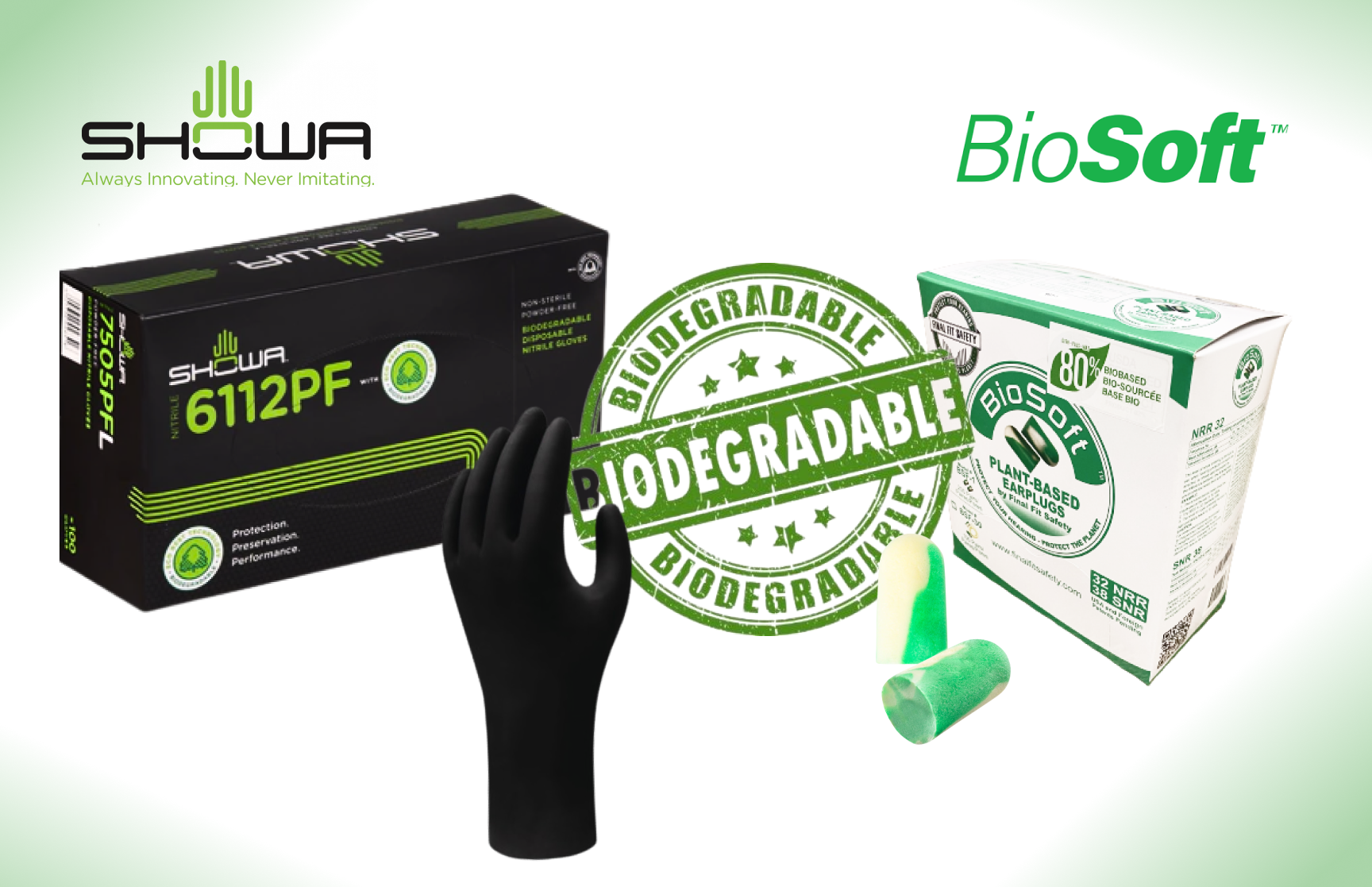As global concerns about plastic pollution and climate change grow, individuals and organizations alike are seeking sustainable alternatives to everyday disposable products. Two such innovations—biodegradable gloves and biodegradable earplugs—are rapidly gaining attention as eco-conscious solutions in personal protective equipment (PPE). But do these green alternatives offer the same level of protection as their conventional counterparts? And can they truly help the planet? Let’s explore how these products work, their environmental benefits, and why they may be worth the switch.
What Are Biodegradable Gloves and Earplugs?
Biodegradable gloves and earplugs are designed to perform the same functions as traditional PPE—protecting users from contaminants and noise exposure—but with a significantly reduced environmental footprint. Unlike conventional plastic-based products that can persist in landfills and oceans for hundreds of years, biodegradable options are made from natural or bio-based materials that safely decompose within months to a few years.
Biodegradable Gloves
Biodegradable gloves are made from eco-friendly materials such as sustainably sourced natural rubber latex, bioplastics like PLA and PBAT derived from renewable resources, and plant-based polymers that are compostable in industrial settings. Their manufacturing emphasizes sustainability through energy-efficient equipment, reduced water usage, eco-friendly additives, and waste minimization. Certified to standards like ASTM D6400 and EN 13432, these gloves are safe for the environment and widely used in healthcare, food service, agriculture, waste management, and retail. Compared to disposable gloves, these biodegradable nitrile gloves offer a latex-free, sustainable alternative.
Environmental and User Benefits
-
Faster Decomposition: Some gloves biodegrade by 80% in just 18 months under active landfill conditions, compared to centuries for traditional gloves.
-
Less Plastic Waste: They reduce the burden of plastic accumulation in landfills and oceans.
-
Lower Emissions: Manufacturing and disposal processes result in fewer greenhouse gas emissions.
-
Safe and Durable: Biodegradable gloves meet industry standards for chemical resistance, puncture strength, and microbial protection.
-
Soil Enrichment: When composted, they contribute to nutrient-rich compost, improving soil health.
-
Wildlife Safety: Rapid decomposition helps prevent harm to animals that may encounter discarded gloves.
-
Regulatory Compliance: Many meet government standards for environmental safety.
Biodegradable Earplugs
Biodegradable earplugs contain approximately 82% bio-based content and deliver comfort and performance comparable to traditional polyurethane or PVC foam earplugs. They offer a significantly reduced environmental impact, breaking down by 76% within 180 days under aerobic landfill conditions.
Environmental and User Benefits
-
Shorter Landfill Lifespan: Reduces long-term environmental contamination.
-
Lower Carbon Footprint: BioSoft™ earplugs emit up to 5.6 times less CO₂ during production and breakdown.
-
Sustainable Hearing Protection: They meet high performance standards, with comparable noise reduction ratings (NRR 32).
-
Corporate Responsibility: Ideal for workplaces aiming to meet sustainability goals while ensuring employee safety.
Why Make the Switch?
Choosing biodegradable gloves and earplugs supports a circular economy by minimizing waste and promoting the safe return of materials to the earth. It reduces dependence on fossil fuels, helps keep oceans, landfills, and air cleaner, encourages sustainable innovation, and protects both people and the planet, without sacrificing safety or performance.
FAQs
1. Do biodegradable gloves offer the same durability as regular gloves?
Biodegradable gloves have evolved to match the durability of traditional gloves. Innovations in materials, such as biodegradable nitrile, ensure they provide comparable strength and resistance, making them suitable for various tasks without compromising performance.
2. Are there reusable, biodegradable earplugs?
Yes, some biodegradable earplugs are designed for multiple uses. Made from durable natural materials, they can be cleaned and reused several times before disposal, offering both environmental benefits and cost savings. Always follow the manufacturer's guidelines for reuse.
3. Can biodegradable gloves be composted at home?
While some biodegradable gloves are labelled as compostable, they often require industrial composting conditions to break down effectively. Home composting may not provide the necessary heat and microbial activity, so it's advisable to dispose of them in facilities equipped for composting such materials.
4. What is the shelf life of biodegradable nitrile gloves, and how should they be stored?
Biodegradable nitrile gloves typically have a shelf life similar to traditional nitrile gloves, around three years. To maintain their integrity, store them in a cool, dry place away from direct sunlight and heat sources. Proper storage ensures that the gloves retain their protective qualities until they're ready for use.
5. What certifications ensure that biodegradable gloves are truly compostable?
To verify the compostability of biodegradable gloves, look for certifications such as ASTM D6400, EN 13432, AS 5810, and OK Compost. These standards confirm that the gloves meet internationally recognized criteria for compostability.
